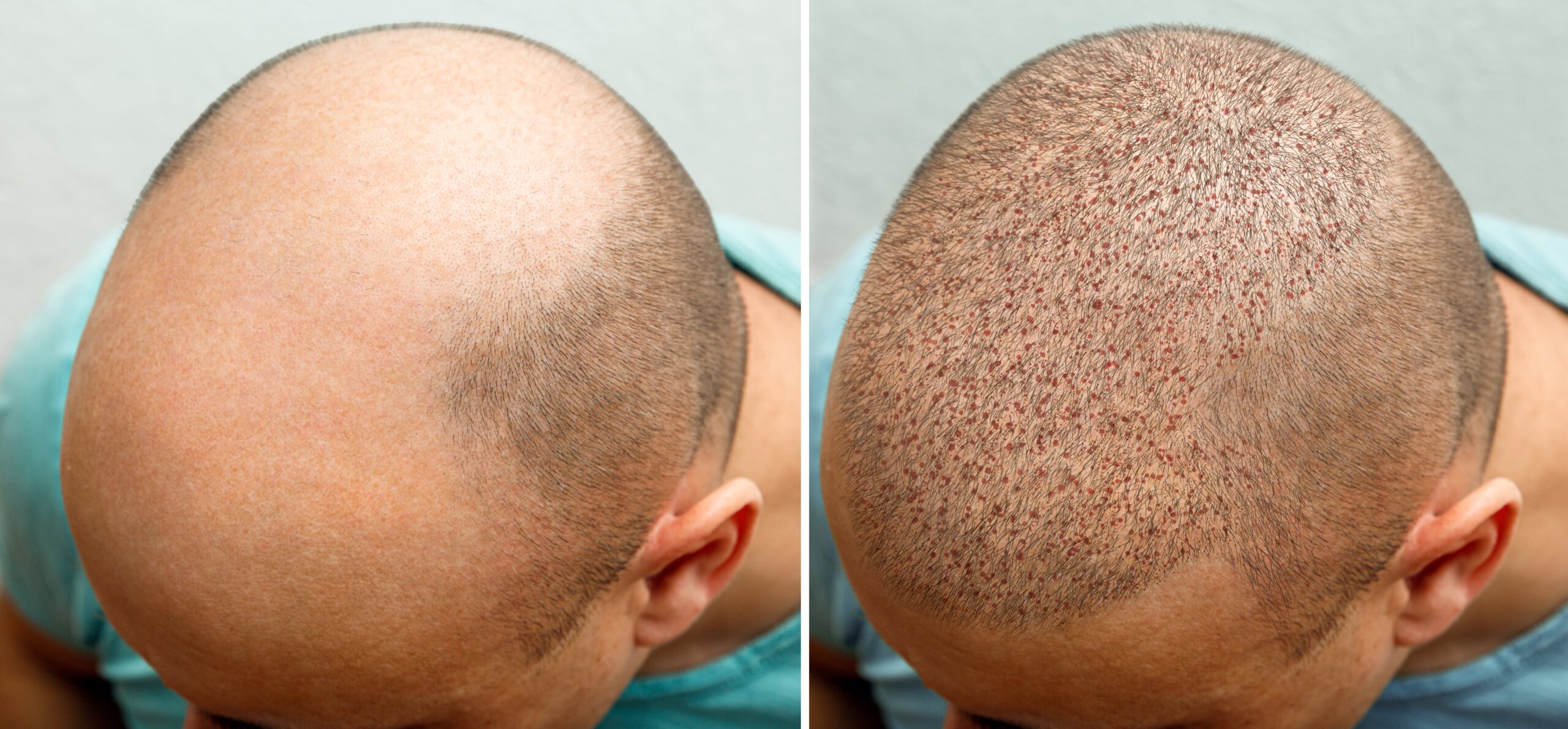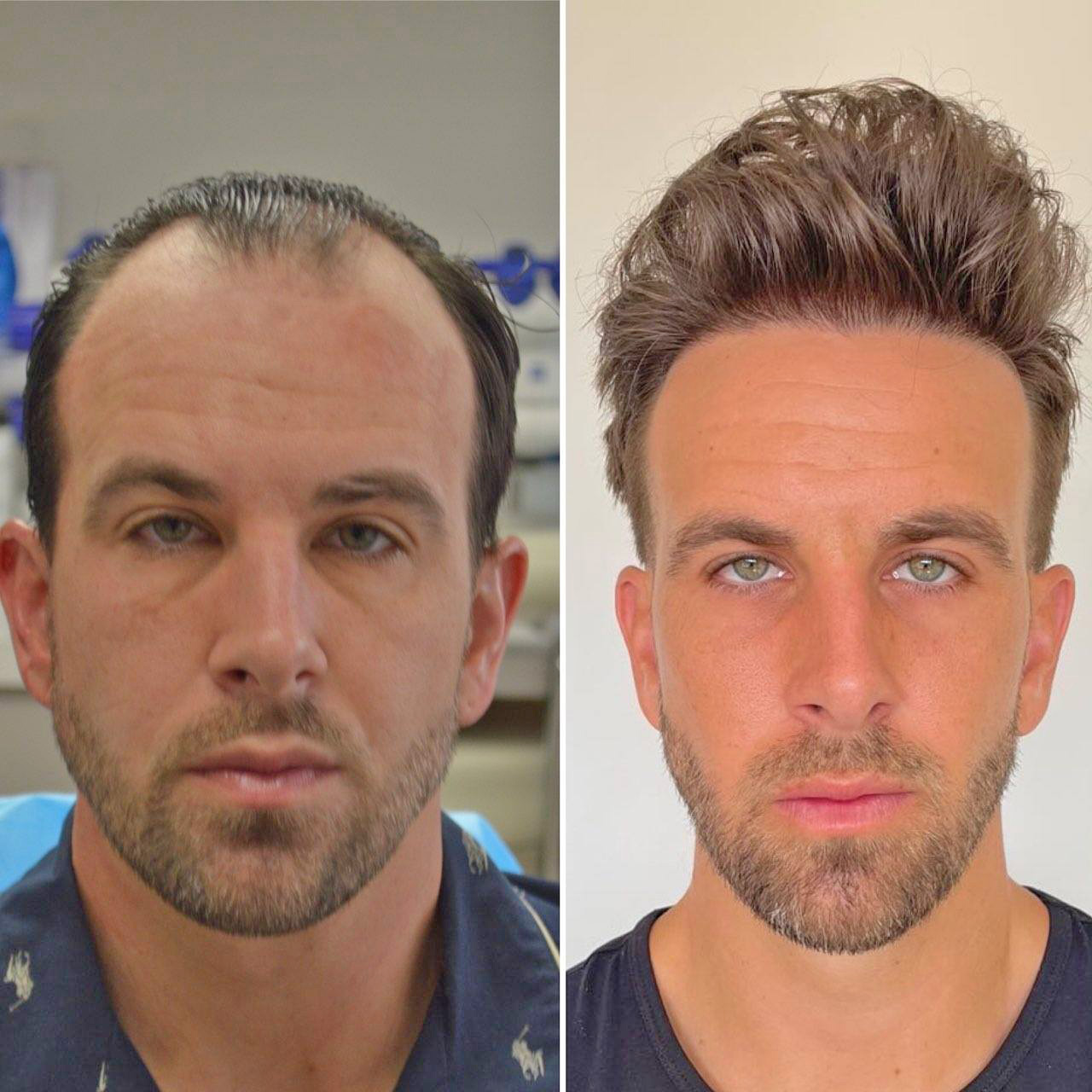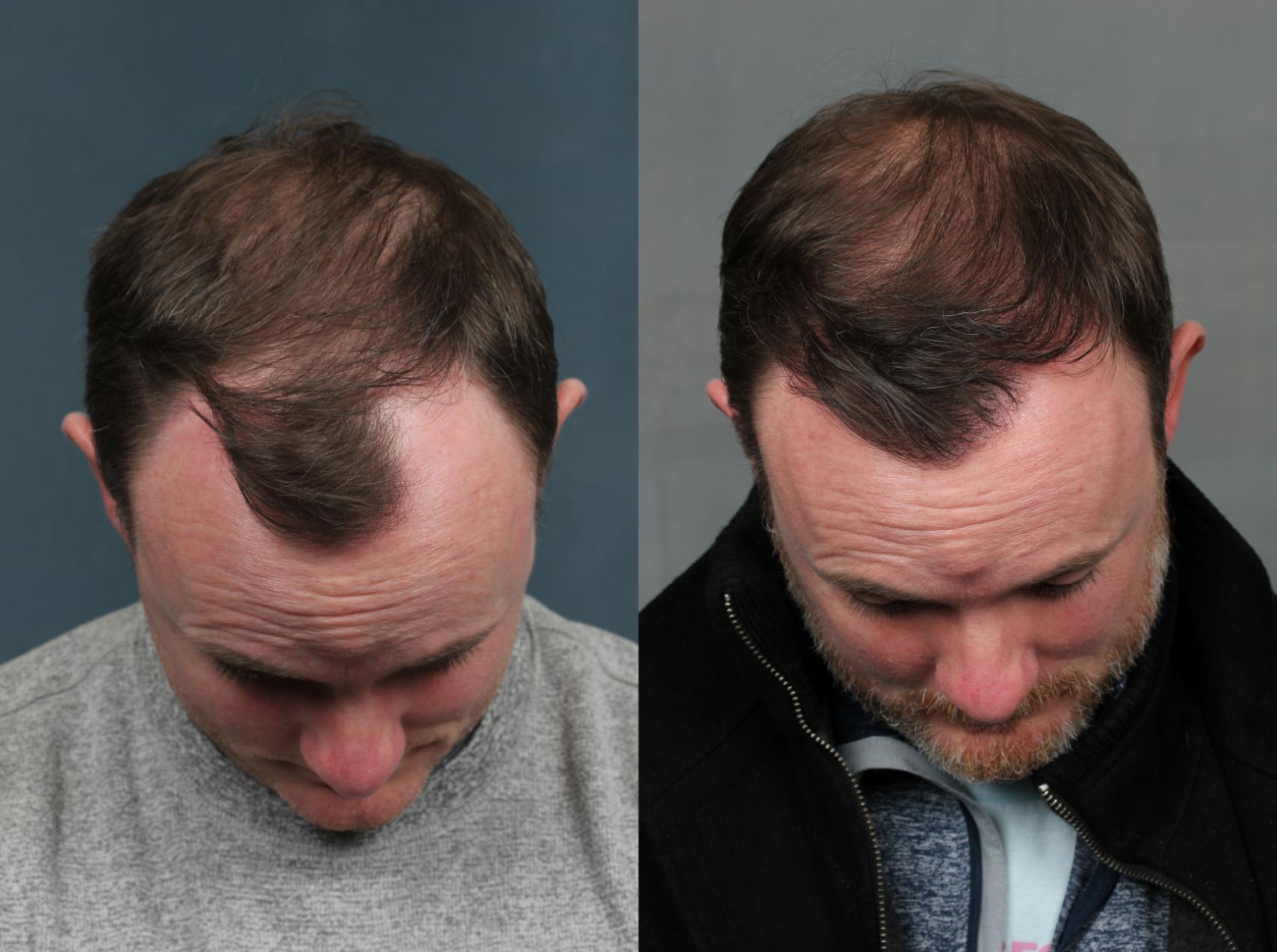Hair Implants: Your Full Guide To Restoring Your Hair Naturally
Detail Author:
- Name : Adeline Ullrich
- Username : hhomenick
- Email : maci86@boyle.com
- Birthdate : 1999-09-10
- Address : 168 Julio Stravenue Lake Eino, MD 02571
- Phone : +1-254-421-3547
- Company : Green-Harris
- Job : Counseling Psychologist
- Bio : Natus hic vitae cum sint voluptas qui. Molestiae magni in quos nisi doloremque quis et. Voluptatem autem non expedita esse et et. Ea consequatur quia suscipit.
Socials
instagram:
- url : https://instagram.com/emmanuelfeest
- username : emmanuelfeest
- bio : Nesciunt deleniti est aut vitae. Inventore voluptatibus enim qui sequi perferendis odio id.
- followers : 1114
- following : 710
facebook:
- url : https://facebook.com/feeste
- username : feeste
- bio : Voluptate quia accusantium dignissimos eaque iure fugit.
- followers : 2232
- following : 97
twitter:
- url : https://twitter.com/emmanuelfeest
- username : emmanuelfeest
- bio : Autem omnis rerum ut. Et omnis dolor omnis quisquam. Hic nisi iure est optio qui. Ducimus nemo voluptate id placeat quae tenetur rem iste.
- followers : 4551
- following : 1865
linkedin:
- url : https://linkedin.com/in/emmanuel.feest
- username : emmanuel.feest
- bio : Ut iste exercitationem veritatis blanditiis est.
- followers : 576
- following : 1097
Are you finding your hairline is receding a bit, or perhaps your hair feels thinner than it once did? It's a pretty common experience, and for many people, it can feel a little disheartening, you know? The good news is that there are some really effective ways to bring back that fuller look, and one option that lots of people consider is hair implants.
This approach, sometimes called a hair transplant, actually uses your own existing hair to fill in those areas that are looking sparse. It's about moving healthy hair follicles from one part of your head, where there's plenty of hair, to where you want more coverage, in a way.
Learning about this process can really help you decide if it's the right step for you. So, we'll cover what it involves, how it works, and what you can generally expect to be honest.
Table of Contents
- What Are Hair Implants?
- Understanding the Hair Implant Process
- FUE Hair Implants: A Closer Look
- DHI Hair Implants: What's Different?
- Comparing FUE and DHI
- The Journey of Recovery and Seeing Results
- What Do Hair Implants Cost?
- Factors Influencing the Price
- Location and Cost Differences
- Potential Benefits and Things to Consider
- Are There Alternatives to Hair Implants?
- Frequently Asked Questions About Hair Implants
- Taking the Next Step for Your Hair
What Are Hair Implants?
Hair implants, or hair transplants, offer a way to address hair thinning or bald spots using your own natural hair. Basically, a hair transplant fills in a thin or balding area with your own hair follicles. This means the hair looks, feels, and grows just like your existing hair, which is pretty great.
The idea is quite simple: healthy hair follicles are taken from a part of your head where hair growth is strong, usually the back or sides, and then carefully placed into the areas where hair is sparse. This method gives a very natural appearance because it's your own hair, you know, just moved to a new spot.
It's a long-lasting solution for many people looking to regain a fuller head of hair. This procedure has been refined quite a bit over the years, making it a reliable choice for hair restoration. So, it's something many consider.
Understanding the Hair Implant Process
The process of getting hair implants involves a few key steps, but the main idea is always about moving those healthy hair follicles. Typically, a specialist will work with you to plan out where the new hair will go, making sure it looks natural with your existing hairline and growth pattern. This planning part is quite important, you know, for the overall look.
The procedure itself is usually done in a clinic setting, and you're awake during it, though you might get something to help you relax. The areas where hair is taken and where it's placed are numbed, so you shouldn't feel much discomfort during the actual process. There are two main ways this is done, and we'll look at those now, so.
FUE Hair Implants: A Closer Look
One very popular way to do hair implants is called Follicular Unit Extraction, or FUE. With FUE hair transplant surgery, hair follicles are harvested from the back of your head and implanted in thin or bald areas. This method involves taking individual hair follicles, one by one, from a donor area.
The doctor uses a tiny tool to make small, round incisions around each follicular unit, then gently pulls it out. Because individual units are taken, this method leaves very tiny, almost invisible scars that look like small dots, which is a benefit for many people. It's a precise process, and that's why it's so widely used, you know.
Once the follicles are collected, small recipient sites are made in the balding areas, and the follicles are carefully placed into these tiny openings. The goal is to make sure they grow in a natural direction and density. It's a common choice for its less noticeable scarring, so.
DHI Hair Implants: What's Different?
Another method gaining a lot of attention is Direct Hair Implantation, or DHI. You might wonder, what is a DHI hair transplant? Well, DHI is similar to FUE in that it also involves taking individual hair follicles from a donor area. However, the main difference lies in how those follicles are placed into the recipient area, as a matter of fact.
With DHI, a specialized tool called a Choi Implanter Pen is used. This pen allows the doctor to extract the follicle and then implant it directly into the scalp at the same time, without needing to create separate incisions beforehand. This direct placement is a key feature of DHI, and it's quite a unique aspect.
The DHI method offers a high level of control over the angle, direction, and depth of the implanted hair, which can lead to a very dense and natural-looking result. It's often chosen for its precision and potentially quicker healing time for the recipient area. So, it has some distinct advantages.
Comparing FUE and DHI
When you're considering hair implants, you might ask how does it compare to FUE? Both FUE and DHI are effective ways to get hair implants, and both use your own hair follicles. The main difference, as we discussed, is the method of implantation. FUE creates recipient sites first, then implants the follicles. DHI uses a special pen to do both at once, you know.
Each method has its own set of pros and cons. FUE is generally more widely available and can be good for larger areas. DHI, with its direct implantation, might offer more precision and potentially less trauma to the scalp in the recipient area, which can mean a slightly faster recovery there. It really depends on your specific situation and what your doctor recommends, you see.
For example, DHI might be favored for achieving very high density in smaller areas, while FUE might be more practical for covering a broader area. Both can give you excellent, natural-looking results. It's good to learn the pros and cons of each, how it works, and how soon you’ll see results before making a decision, obviously.
The Journey of Recovery and Seeing Results
After your hair implant procedure, a period of recovery is expected. Immediately after, you might notice some redness and small scabs in both the donor and recipient areas. This is quite normal, and your doctor will give you instructions on how to care for your scalp during this time, like how to gently wash it. It's a pretty straightforward process, generally.
Within a few weeks, the newly implanted hairs will typically shed. This is also a normal part of the process and no cause for worry; it's just the hair shaft falling out, while the follicle itself stays in place. This shedding makes way for new, permanent hair growth. So, don't be alarmed by it.
As for how soon you’ll see results, new hair usually starts to grow in about three to four months after the procedure. It begins as fine, thin hair, but over the next several months, it will thicken and mature. Full results, with noticeable density and coverage, usually take about 12 to 18 months to appear. It's a gradual process, but the wait is very much worth it for many people, apparently.
What Do Hair Implants Cost?
The cost of hair implants is a significant consideration for anyone thinking about the procedure. It's not a one-size-fits-all price, and it can vary quite a bit depending on several things. You can learn about the cost, results, and alternatives to hair transplant surgery, but the price part is often a big question for people, basically.
According to real patients, the average cost of a hair transplant can differ widely, and some people pay thousands more than others. This difference isn't just random; it's tied to specific aspects of the procedure and where you have it done. So, it's good to understand what influences the price.
It's important to get a clear estimate from your chosen clinic after a consultation, as they can assess your individual needs. This will give you the most accurate idea of what you might pay. So, that's something to keep in mind.
Factors Influencing the Price
Several things play a part in how much hair implants will cost you. One of the biggest factors is the number of grafts you need. A graft is a small piece of tissue containing one or more hair follicles. If you have a larger area of thinning or baldness, you'll need more grafts, and that will increase the total price. It's pretty simple math, really.
The method chosen, whether FUE or DHI, can also affect the cost. Sometimes, one method might be more expensive due to the specialized tools or the time it takes. The experience and reputation of the clinic and the surgeon also play a role; highly sought-after experts might charge more for their services. This is something to consider, too.
Other things like any follow-up appointments, medications needed after the procedure, or even special aftercare products can be part of the overall cost. So, when you ask about the price, make sure to get a breakdown of everything included, you know.
Location and Cost Differences
Where you get your hair implants done can also make a big difference in the price. For example, if you're looking for hair transplant in Dallas, TX, the average cost might be different compared to, say, looking for hair transplant in Kansas City, MO, or looking for hair transplant in Richmond, VA. Prices can vary significantly from one city or region to another, as a matter of fact.
Even within the same state, like looking for hair transplant in Kentucky, U.S., you might find different price points depending on the specific city or clinic. This is often due to things like the cost of living in that area, local competition among clinics, and even the demand for hair implant procedures there. So, it's not just about the procedure itself.
It's always a good idea to research clinics in different areas if you're willing to travel, as this could potentially affect your overall expense. However, remember that quality and expertise should always be a top priority, regardless of location. You want good results, obviously.
Potential Benefits and Things to Consider
Getting hair implants comes with several potential benefits that many people find very appealing. The most obvious benefit is regaining a fuller head of hair, which can really boost a person's confidence and how they feel about their appearance. Since it uses your own hair, the results look very natural and blend seamlessly with your existing hair. That's a huge plus, you know.
The results are generally considered permanent because the transplanted follicles are taken from areas that are genetically resistant to balding. This means they should continue to grow hair for your lifetime. You can learn about the benefits, cost, and more, but this permanence is a big draw for many.
However, it's also important to consider the other side. There's the cost, which we've discussed, and the recovery period, which requires patience. You also need to be realistic about the results; while they are natural, they might not bring back the exact density you had in your youth. It's good to learn about its cost, recovery, pros and cons, and more before deciding, naturally.
Are There Alternatives to Hair Implants?
For those who might not be ready for hair implants or are exploring all their options, there are indeed alternatives to hair transplant surgery. These options generally fall into non-surgical categories and can be effective for certain types of hair loss or for maintaining existing hair. So, it's worth knowing about them.
Some people find success with medications, like topical solutions or oral pills, that can help slow down hair loss or even promote some new growth. These treatments often require ongoing use to maintain their effects. Another option is Platelet-Rich Plasma (PRP) therapy, which involves using your own blood plasma to stimulate hair follicles. It's a fairly popular non-surgical choice, too.
These alternatives can be a good starting point for some individuals, or they can be used in combination with hair implants to support overall hair health. It's always best to talk with a hair restoration specialist to figure out which option or combination of options is right for your specific situation. You want the best approach for you, basically.
For more general information on hair loss and its various causes, you might find it helpful to look at resources from reputable health organizations, like the American Academy of Dermatology Association, which offers insights into different types of hair loss and treatments: https://www.aad.org/public/diseases/hair-loss.
Frequently Asked Questions About Hair Implants
When people think about hair implants, a few questions pop up very often. Let's try to clear up some of those common queries, so you have a better idea of what to expect, you know.
Are hair implants permanent?
Yes, for the most part, hair implants are considered a permanent solution. The hair follicles used for the transplant are taken from areas of your head that are genetically programmed to resist balding, typically the back or sides. Because of this, when they are moved to a new area, they usually retain this resistance and continue to grow hair for your lifetime. So, that's a big benefit, really.
How much do hair implants cost?
The cost of hair implants can vary quite a lot, as we've discussed. It depends on things like the number of grafts you need, the specific method used (FUE or DHI), and where the clinic is located. Prices can range significantly, from a few thousand dollars to much more, depending on these factors. It's best to get a personalized quote after a consultation, honestly.
What are the risks of hair implants?
Like any medical procedure, hair implants do come with some potential risks, though they are generally considered safe. Common, minor side effects can include swelling, bruising, or some discomfort in the treated areas. There's also a small chance of infection, numbness, or temporary shedding of existing hair. Serious complications are rare, but it's important to discuss all potential risks with your doctor before the procedure. You want to be fully informed, obviously.
Taking the Next Step for Your Hair
Thinking about hair implants is a big step, and getting all the right information helps you feel confident in your choices. Understanding how the process works, what it might cost, and what the recovery involves can really help you decide if it's the right path for you. It's about finding a solution that makes you feel good about your appearance, you know.
If you're curious to learn more about hair restoration options on our site, we have plenty of helpful articles. For a deeper look into the various hair transplant methods, click here. Talking with a specialist can give you personalized advice and help you explore all the possibilities for your hair. So, consider that as your next move.

FUE Hair Transplant Before and After Process

Hair Transplant Before And After

NeoGraft Hair Transplant Before & After Photo Gallery | Louisville, KY